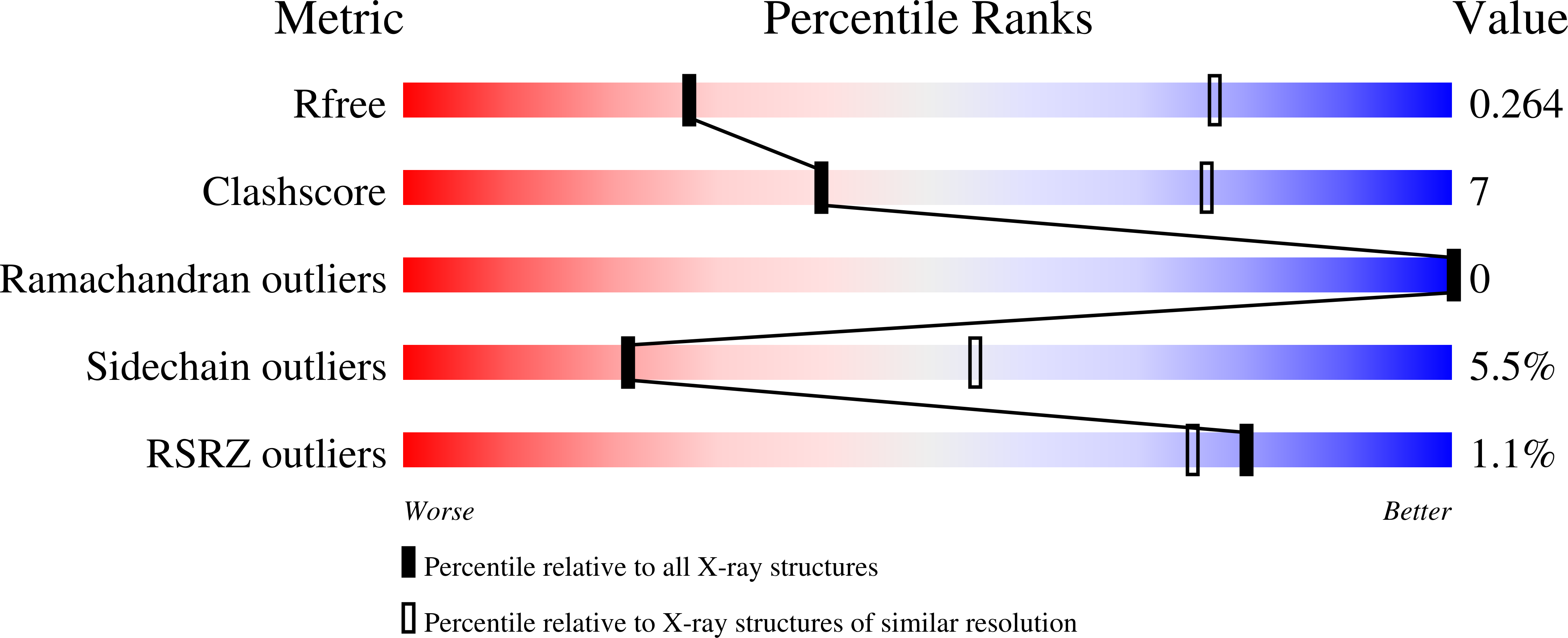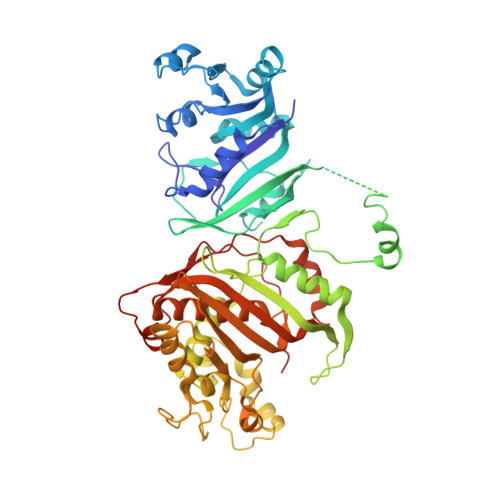Discovery of Selective Toxoplasma gondii Dihydrofolate Reductase Inhibitors for the Treatment of Toxoplasmosis.
Hopper, A.T., Brockman, A., Wise, A., Gould, J., Barks, J., Radke, J.B., Sibley, L.D., Zou, Y., Thomas, S.(2019) J Med Chem 62: 1562-1576
- PubMed: 30624926
- DOI: https://doi.org/10.1021/acs.jmedchem.8b01754
- Primary Citation of Related Structures:
6N1S, 6N1T - PubMed Abstract:
A safer treatment for toxoplasmosis would be achieved by improving the selectivity and potency of dihydrofolate reductase (DHFR) inhibitors, such as pyrimethamine (1), for Toxoplasma gondii DHFR ( TgDHFR) relative to human DHFR ( hDHFR). We previously reported on the identification of meta-biphenyl analog 2, designed by in silico modeling of key differences in the binding pocket between TgDHFR and hDHFR. Compound 2 improves TgDHFR selectivity 6.6-fold and potency 16-fold relative to 1. Here, we report on the optimization and structure-activity relationships of this arylpiperazine series leading to the discovery of 5-(4-(3-(2-methoxypyrimidin-5-yl)phenyl)piperazin-1-yl)pyrimidine-2,4-diamine 3. Compound 3 has a TgDHFR IC 50 of 1.57 ¡À 0.11 nM and a hDHFR to TgDHFR selectivity ratio of 196, making it 89-fold more potent and 16-fold more selective than 1. Compound 3 was highly effective in control of acute infection by highly virulent strains of T. gondii in the murine model, and it possesses the best combination of selectivity, potency, and prerequisite drug-like properties to advance into IND-enabling, preclinical development.
Organizational Affiliation:
Vyera Pharmaceuticals, LLC , 600 Third Avenue, 10th Floor , New York , New York 10016 , United States.




















